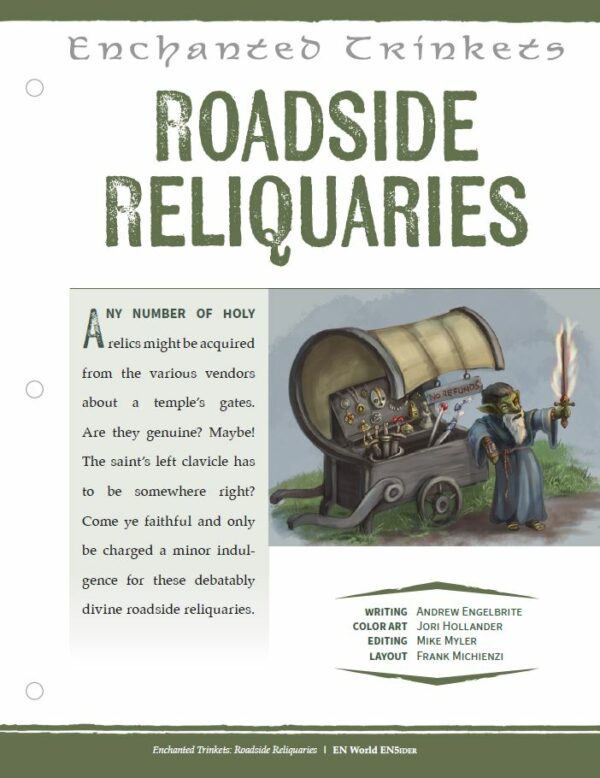

The rules for a fair-play whodunnit can make for a fun investigative adventure.
Who Done What?
Although they’ve since fallen out of vogue, fair-play whodunnits were quite popular with early detective fiction of the 1930s. The term refers to mystery stories where the reader or audience is given all the necessary clues and information to solve the crime alongside the detective. In a fair-play whodunnit, the emphasis is on the puzzle-solving aspect of the mystery. The term “fair-play” indicates that the mystery adheres to a set of rules that ensure the reader has a fair chance of deducing the identity of the culprit before the big reveal.
Fair-play whodunnits lend themselves to role-playing campaigns because they are meant to be solvable. The detectives, whether amateur or professional, must use their intellect, observational skills, and logical reasoning to piece together the clues and unravel the truth behind the crime. The story presents a series of tantalizing clues, hidden motives, and potential suspects, inviting players to engage in the investigation themselves.
The Ten Commandments of Fair-Play
In 1928, the writer Father Ronald Knox created a list of plot devices known as Knox’s Decalogue. These rules still apply today, but require some tweaking to apply them to fantasy campaigns.
- The Criminal: In the Fair-play Whodunnit, the culprit must be introduced early in the story, but their inner thoughts should remain hidden from the reader or players. In a D&D campaign, DMs can introduce NPCs who become suspects in the mystery. However, the true perpetrator should be hidden, with their motives obscured until the climactic reveal.
- No Supernatural Agencies: The use of supernatural or preternatural elements is discouraged in Fair-play Whodunnits. In a fantasy D&D setting, this translates to avoiding the use of overtly magical means to commit the crime. Instead, focus on mundane methods amplified by magical twists or disguise spells. In other words, internal logic is a must — if a spell is used, the PCs should have access to it or known how it’s cast. Some older movies exercise several plot contortions to avoid breaking this rule, but for fantasy campaigns the game’s rules provide something of a guideline. Conversely, a villain shouldn’t use a spell that isn’t in the rules.
- Limited Secret Passages: Fair-play whodunnits relied heavily on sneaking around, providing seemingly magical routes for villain to appear and disappear from the screen. While only one secret passage is allowed in the Fair-play Whodunnit, DMs can adapt this rule by introducing enchanted doorways or teleportation circles within suitable locations. And remember, if the villain can use it, so can the PCs!
- No Undiscovered Poisons: Like secret passages, mystery authors were fond of adding undetectable, instantly lethal poisons to their plots to make it nearly impossible for authorities to determine the identity of the killer. In a fantasy setting, DMs can use rare or magical poisons that already exist in the rules, but should avoid creating new poisons that nobody’s ever heard of.
- Avoid Clichés and Stereotypes: The original Knox’s Decalogue prohibits the use of certain ethnic stereotypes. In a D&D campaign, avoid using fantasy equivalents, such as clichéd species, to prevent perpetuating harmful tropes. This is often played against type (everyone suspects the dwarf of poisoning someone, or the elf of casting a spell).
- No Detective Accidents: Ensure that the detective’s discoveries are the result of clever deduction and not fortunate accidents. In a D&D campaign, the detective skills of a player character should lead to the uncovering of vital clues rather than coincidental discoveries — or DM fiat.
- No Detective as the Culprit: As in the original rules, the detective cannot be the culprit in a Fair-play Whodunnit. In a D&D campaign, this means keeping player characters free from suspicion, allowing them to focus on solving the mystery. It’s tough to make them out to secretly be villains in any case.
- Instant Clue Reveal: Clues should be readily available for players to inspect. In a D&D campaign, ensure that players have access to all the clues needed to solve the mystery, but challenge them with cleverly hidden or magically disguised information.
- The NPC’s Mind: The “Watson” character, typically a foil for the lead detective, should be open and transparent in their thoughts. In a D&D campaign, this can be an NPC or a player character who assists the party. Their capabilities should be slightly below the average player’s, allowing players to feel engaged and challenged by the investigation.
- Prepare for Doubles: In a fantasy setting, “doubles” can take the form of doppelgangers or magical clones. Ensure that their existence is foreshadowed to avoid surprising players with unexpected duplications.
We discuss fifty of these types of dramas in our recently-released podcast, 50 Date Night Screams, along with D&D statistics for each major villain. Although these rules are decades old, they still apply to fashioning a mystery that heroes (and by proxy, their players) can figure out on their own.
Your Turn: What guidelines do you use for solving mysteries in your game?








